

Kate McMillan & Sarah Putman Clegg

cooking basics Everyone agrees that packing a lunch should take as little timeand dirty as few dishesas possible. But there are a few key lunch-box staples that are worth the time it takes to cook them, whether you do them in advance or make time in the morning. blanching fresh or frozen vegetables Bring a saucepan of water to a boil over high heat, and prepare a bowl of ice water. When the water comes to a boil, add fresh or frozen vegetables and cook just until tender-crisp (if fresh) or just until warmed through (if frozen), 35 minutes. Drain the vegetables and immediately transfer them to the ice water to stop the cooking. cooking chicken breasts You can cook up a few skinless, boneless chicken breast halves in just 10 minutes or less. cooking chicken breasts You can cook up a few skinless, boneless chicken breast halves in just 10 minutes or less.
Cook the meat using one of the methods below, let the meat cool, and then shred or chop as needed. poaching Bring a large saucepan of water to a boil over high heat. Add teaspoon salt and the chicken, reduce the heat until the water is barely simmering, and cook until the chicken is opaque throughout, 810 minutes. sauting Season both sides of each chicken breast half with salt and pepper. In a frying pan, heat a thin film of canola or olive oil over medium heat. cooking pasta Because the cooking time for pasta varies with the shape and type of noodle, its best to follow the cooking instructions on the package. cooking pasta Because the cooking time for pasta varies with the shape and type of noodle, its best to follow the cooking instructions on the package.
Remember to stir the pasta occasionally as it cooks, and test it often to make sure you dont overcook it. To prevent the noodles from sticking together as they cool, coat them with pasta sauce or a little olive oil immediately after cooking. cooking rice white rice The exact ratio of water to rice varies with different types of rice, but here are general directions for cooking rice on the stove top: For 3 cups (15 oz/470 g) cooked rice, place 1 cup (7 oz/ 220 g) uncooked rice in a fine-mesh sieve and rinse until the water runs clear. Transfer the rice to a heavy saucepan and add 1 cups (12 fl oz/375 ml) water. Bring to a boil, give the rice a quick stir, reduce the heat to low, cover, and cook, undisturbed, until all the water has been absorbed, about 20 minutes. sushi rice Follow the cooking instructions for white rice, being sure to use short-grain (sushi) rice. sushi rice Follow the cooking instructions for white rice, being sure to use short-grain (sushi) rice.
While the rice cooks, combine cup (2 fl oz/60 ml) rice vinegar, 3 tablespoons sugar, and 1 tablespoon salt in a small saucepan over low heat and cook, stirring, until the sugar and salt dissolve, about 2 minutes. Let cool. Transfer the cooked rice to a wide, shallow dish and use a spatula to spread it out evenly. Slowly pour in the vinegar mixture while slicing the spatula through the rice; do not stir. Cover with a damp kitchen towel until ready to roll out your sushi. frying bacon In a frying pan, cook strips of bacon over medium heat, turning once, until crisp and browned, about 6 minutes.
Transfer to a paper towellined plate to drain. hard-boiling eggs Put the eggs in a small saucepan and add cold water to cover. Place over high heat and bring the water to a boil. Reduce the heat to medium-low and simmer the eggs for 12 minutes. Place the saucepan in the sink and run cold water over the eggs to cool them. Roll each egg on a work surface to crack the eggshell.
Carefully peel off the shell. get a jump on the week A little bit of timeeven 10 minutesspent during the weekend to prepare for the weeks lunches will pay off big during the week. Making time for prep work also means spending less money on presliced, prewashed, or premade foods. Wash and chop veggies and store them in small bags or containers to use as dippers or to incorporate into sandwiches and wraps. Cut fresh fruit like pineapple, melon, or mango into cubes or spears for grab-and-go lunch packing. . . to mix with precooked pasta. to mix with precooked pasta.
Make a vinaigrette or other salad dressing. big enough for a few breakfasts and/or lunches. or a frittata. Cook a chicken breast or a few strips of bacon for use in salads, wraps, or sandwiches during the week. Hard-boil eggs to have on hand to make quick work of deviled eggs or egg salad; to slice for salads; or to eat as is. . 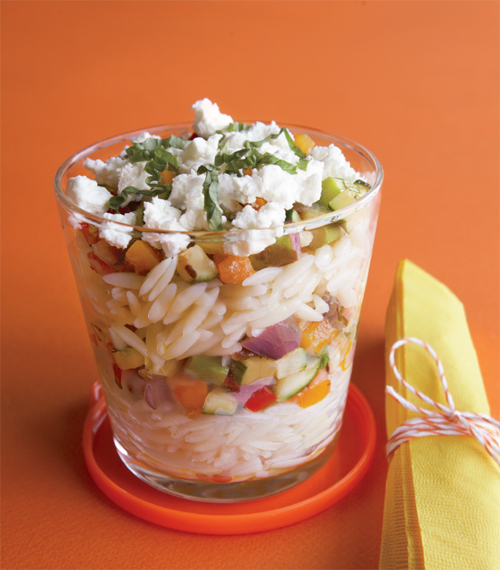
use it or lose it
Maybe you hard-boiled a few eggs over the weekend; or you have leftover cooked chicken and rice from last nights dinner; or perhaps you spy some bananas languishing on the counter.

use it or lose it
Maybe you hard-boiled a few eggs over the weekend; or you have leftover cooked chicken and rice from last nights dinner; or perhaps you spy some bananas languishing on the counter.
Heres a list of recipes that will help you use up ingredients that wont last forever. cooked vegetables cooked chicken roast turkey breast cooked steak or pork cooked tofu cooked bacon cooked rice chicken & cooked pasta hard-boiled eggs overripe bananas think outside the (lunch) box OK, were all living in the real world . Few parents have the time and energy to pack a new, exciting lunch for their children each day. Its enough of a challenge getting breakfast and dinner on the table. But if youre stuck in a lunch box rut, this book can jump-start your imagination without adding to your workload. Some of these recipes will be much-needed additions to your weekly rotation.
Others you may simply not have considered as lunchtime material, and they will help you use items already on hand in new and thrilling ways. Plus, youll discover some brilliant ideas about presenting lunch food so its more fun to pack and eat. You may be surprised at the variety of foods you can entice your child to eat by simply making them look, well, irresistible. Another key to lunch-packing success? Preparation is everything. Investing just a little time in advancelike making a batch of egg salad on Sunday or setting out packing supplies the night beforeis much more efficient than starting from scratch every day, saving you time and preventing brain drain on hectic mornings. If what goes into the lunch box is an afterthought, its going to taste like an afterthought.
But with its smart strategies and practical ideas, The Lunch Box has come to the rescue! anatomy of a lunch box Thanks to the rising popularity of bento-style lunch containers, your kids midday meal can be nothing more involved than a varied little hodgepodge of foods. Just aim to make it a well-rounded hodgepodge: always combine a protein (think hard-boiled egg, tofu, chicken, or yogurt); a fruit and/or vegetable (such as grapes, cherry tomatoes, and carrot sticks); and an item rich in complex carbohydrates (try multigrain bread, whole-wheat pasta, or brown rice). keep your cool With an insulated lunch box and a chilled freezer gel pack (or frozen water bottle), perishable food can stay cold and safe to eat until lunchtime. If you are filling a thermos with a warm lunch, make sure you heat the food so that its piping hot; run the thermos under hot water to warm it, too. 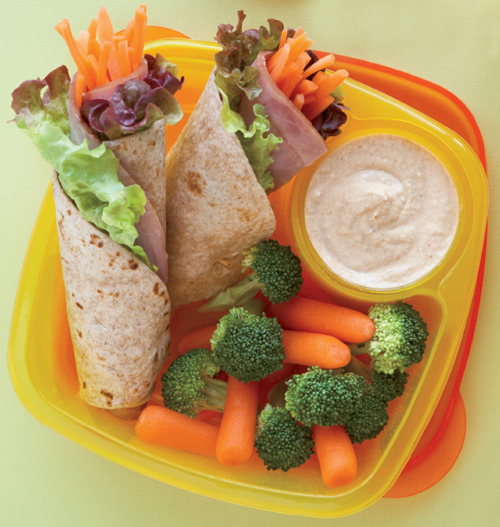


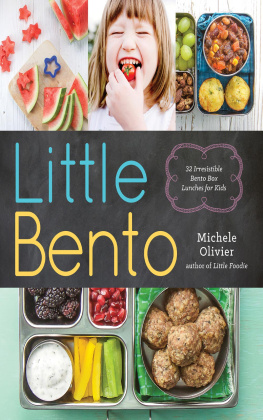
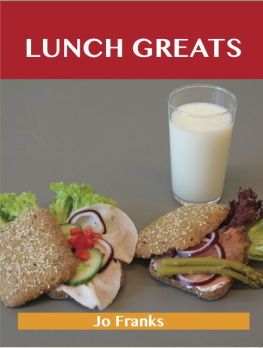
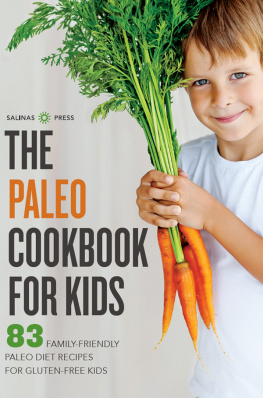

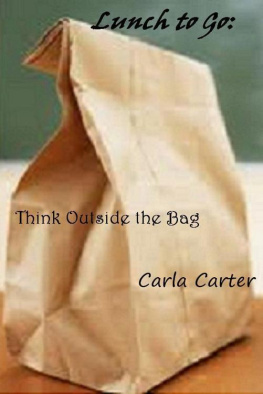
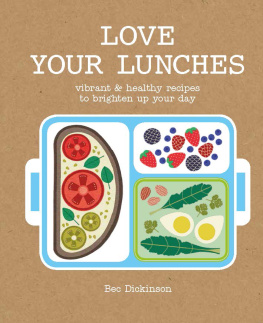

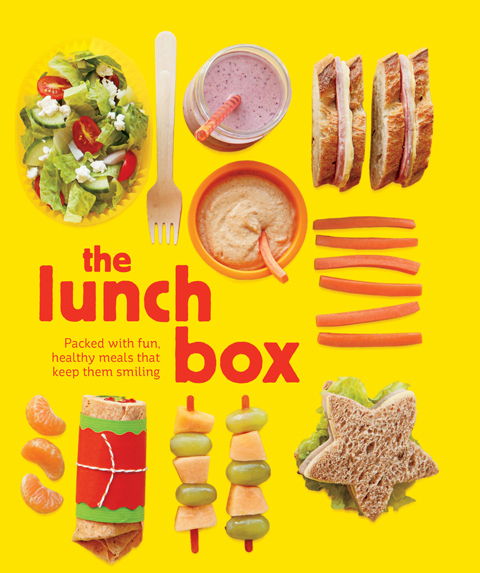

 Kate McMillan & Sarah Putman Clegg
Kate McMillan & Sarah Putman Clegg  cooking basics Everyone agrees that packing a lunch should take as little timeand dirty as few dishesas possible. But there are a few key lunch-box staples that are worth the time it takes to cook them, whether you do them in advance or make time in the morning. blanching fresh or frozen vegetables Bring a saucepan of water to a boil over high heat, and prepare a bowl of ice water. When the water comes to a boil, add fresh or frozen vegetables and cook just until tender-crisp (if fresh) or just until warmed through (if frozen), 35 minutes. Drain the vegetables and immediately transfer them to the ice water to stop the cooking. cooking chicken breasts You can cook up a few skinless, boneless chicken breast halves in just 10 minutes or less. cooking chicken breasts You can cook up a few skinless, boneless chicken breast halves in just 10 minutes or less.
cooking basics Everyone agrees that packing a lunch should take as little timeand dirty as few dishesas possible. But there are a few key lunch-box staples that are worth the time it takes to cook them, whether you do them in advance or make time in the morning. blanching fresh or frozen vegetables Bring a saucepan of water to a boil over high heat, and prepare a bowl of ice water. When the water comes to a boil, add fresh or frozen vegetables and cook just until tender-crisp (if fresh) or just until warmed through (if frozen), 35 minutes. Drain the vegetables and immediately transfer them to the ice water to stop the cooking. cooking chicken breasts You can cook up a few skinless, boneless chicken breast halves in just 10 minutes or less. cooking chicken breasts You can cook up a few skinless, boneless chicken breast halves in just 10 minutes or less. 
